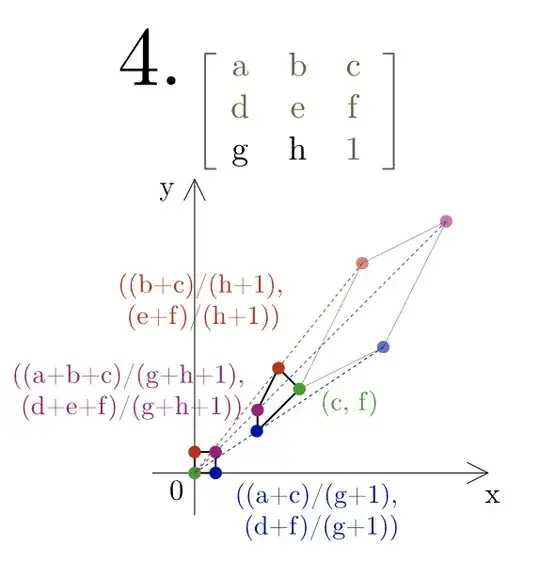In this answer from Pedro Gimeno he proposed the following transformation to map the points of any arbitrary quadrilateral to the unit square
$$\pmatrix{x'\\y'} = > \pmatrix{u_x&v_x&w_x\\u_y&v_y&w_y}\pmatrix{x\\y\\xy}$$
$$x'=u_xx+v_xy+w_xxy\\ y'=u_yx+v_yy+w_yxy$$
It transforms the unit square in a way controlled by the vectors $u=(u_x,u_y), v=(v_x,v_y), w=(w_x,w_y)$ as follows:
Geometric interpretation of u, v, w (sorry, I can't post images)
However, I'd like to do the opposite. I need to integrate on an arbitrary quadrilateral and I'd like to define my integral on the unit square and then map the coordinates of the unit square on the original quadrilateral .
The matrix Pedro proposed, however, is not invertible and I'm not sure a pseudo-inverse matrix is what I'm looking for.
How can I obtain the opposite transformation?
